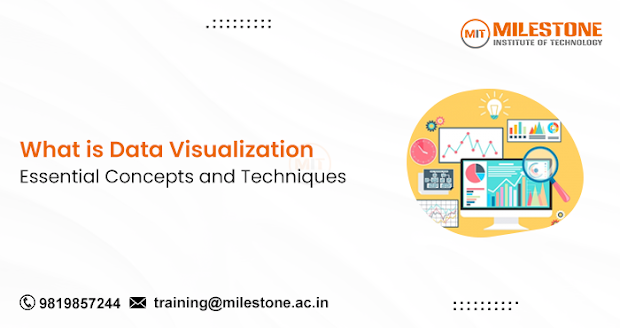What is Data Visualization? Essential Concepts and Techniques
Data Visualization : Definition
Data visualization involves displaying data and information through graphical means. By using visual elements like charts, graphs, and maps, data visualization tools provide an accessible way to see and understand trends, outliers, and patterns in data. In a world increasingly overwhelmed with data, visualization is a key means of making data comprehensible and actionable.
Why is Data Visualization Important?
Data visualization helps to:
Simplify Complex Data: Large datasets can be intimidating. Visualization simplifies these datasets, making it easier to digest and interpret the information.
Identify Trends and Patterns: Visual representations of data can reveal trends, correlations, and patterns that might not be immediately apparent in raw data.
Enhance Decision Making: By providing clear insights, data visualization enables quicker and more informed decision-making.
Improve Communication: Visual data is often easier to share and explain, improving communication across different teams and stakeholders.
Essential Concepts of Data Visualization
1. Clarity and Precision
Data should be presented accurately and with clearly in an effective data visualization. It’s essential to avoid clutter and ensure that the visualization conveys the intended message without ambiguity. Every element in the visual representation should have a purpose and contribute to a clearer understanding of the data.
2. Audience Understanding
Knowing your audience is crucial. It is important to customize the visualization to their demands and level of expertise. For example, a visualization meant for a technical audience might include more detailed data points, while one for a general audience should be simpler and more focused on high-level insights.
3. Choosing the Right Chart Type
Selecting the appropriate chart type is fundamental. Here are some common types:
Bar Charts: Excellent for comparing quantities between various categories.
Line Charts: Ideal for displaying patterns over time.
Pie Charts: Beneficial for presenting percentages and proportions.
Scatter Plots: Great for identifying relationships and correlations between variables.
Heat Maps: Effective for showing the intensity of data points over a given area.
4. Color Usage
Colors can enhance the readability of data visualization but should be used judiciously. They should highlight important data points and maintain a balance to avoid overwhelming the viewer. Consider colorblind-friendly palettes to ensure accessibility.
5. Interactivity
Users may interact with the data through interactive visualizations, investigating many facets and obtaining more profound understandings. Features like zoom, filter, and hover-over details can make the data exploration process more dynamic and informative.
Key Techniques in Data Visualization
1. Data Preparation
Before visualizing, data must be cleaned and organized. This involves removing duplicates, handling missing values, and ensuring the data is in a consistent format. Data preparation sets the foundation for accurate and meaningful visualization.
2. Use of Visualization Tools
There are numerous tools available for creating data visualizations. Some popular ones include:
Tableau: Well-known for having a user-friendly interface and an extensive amount of functionality.
Power BI: When Microsoft tools like Power BI are integrated with other products of Microsoft it works more seamlessly.
D3.js: An interactive, dynamic data visualization library developed using JavaScript.
Excel: While basic, it’s widely accessible and sufficient for simple visualizations.
3. Storytelling with Data
A compelling data visualization often tells a story. To make the insights more memorable and powerful, this entails organizing the information in a way that tells a story. It’s about connecting the dots and guiding the viewer through the data journey.
4. Dashboard Design
Dashboards consolidate multiple visualizations into a single interface, providing a comprehensive view of the data. Effective dashboard design prioritizes key metrics and allows users to drill down into more detailed views as needed.
Best Practices for Effective Data Visualization
Keep it Simple: Avoid unnecessary embellishments that can distract from the data.
Focus on Key Insights: Highlight the most important data points and trends.
Ensure Accuracy: Double-check the data and visualizations for errors or misleading representations.
Test with Users: Gather feedback from your audience to improve the visualization’s clarity and effectiveness.
Conclusion
Data visualization is a powerful tool that transforms complex data into understandable, actionable insights. By mastering the essential concepts and techniques, you can create visualizations that not only present data effectively but also drive informed decision-making and enhance communication. In the age of information overload, the ability to visualize data effectively is more valuable than ever.

.png)


Comments
Post a Comment